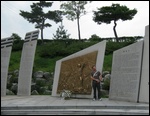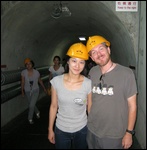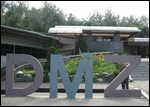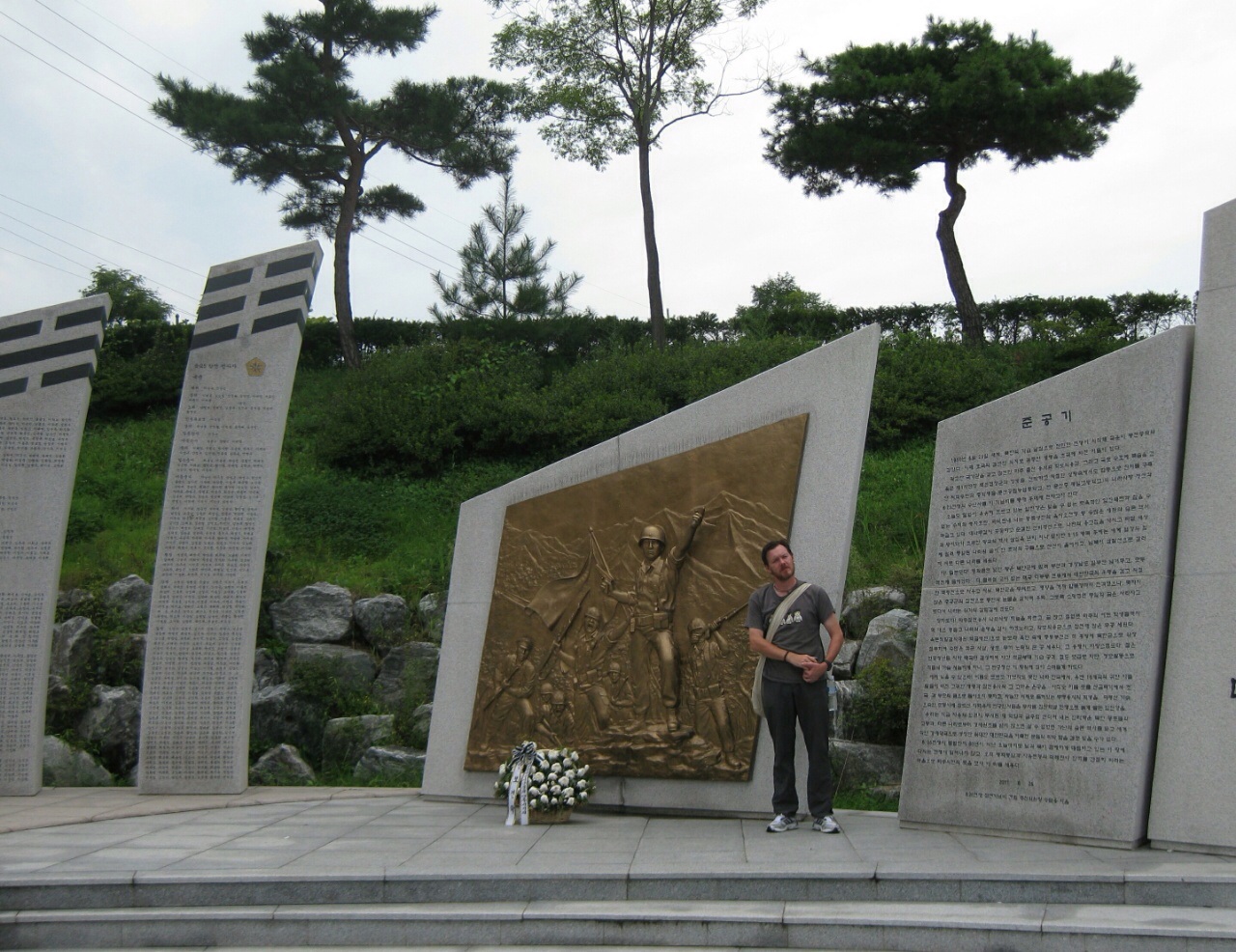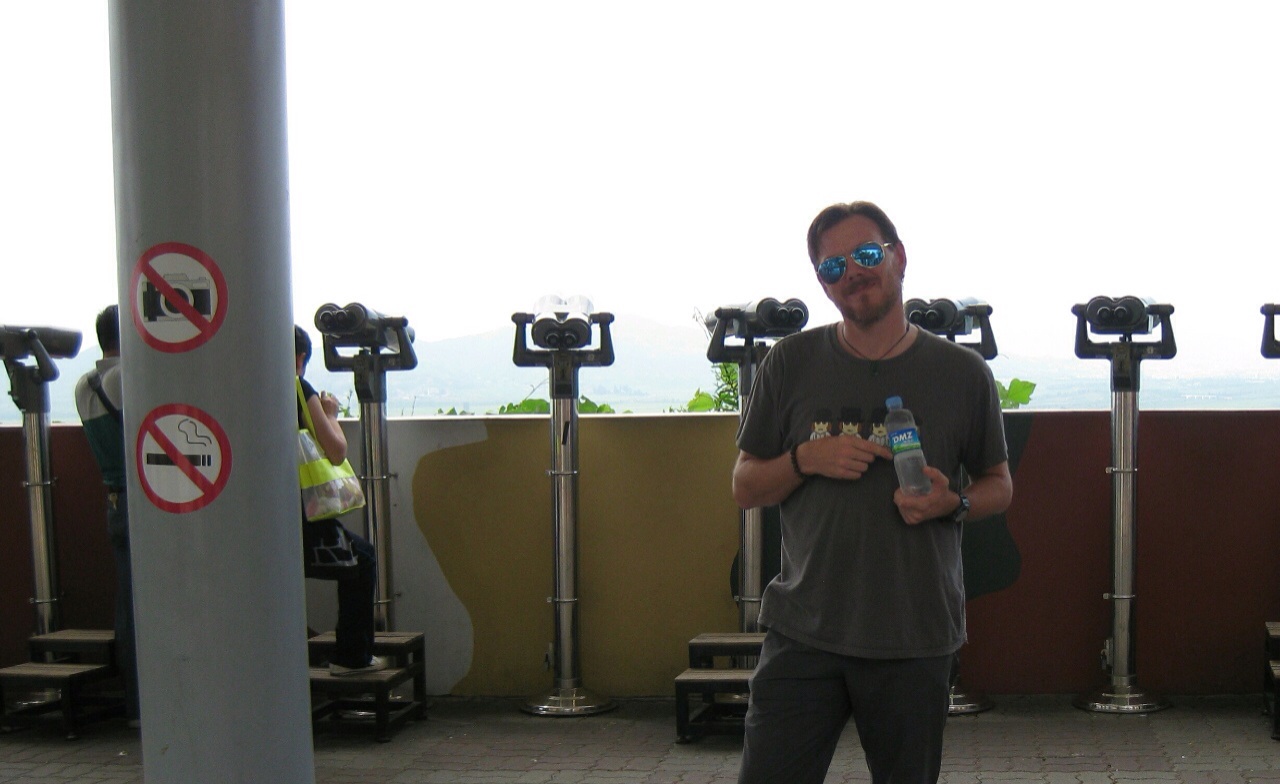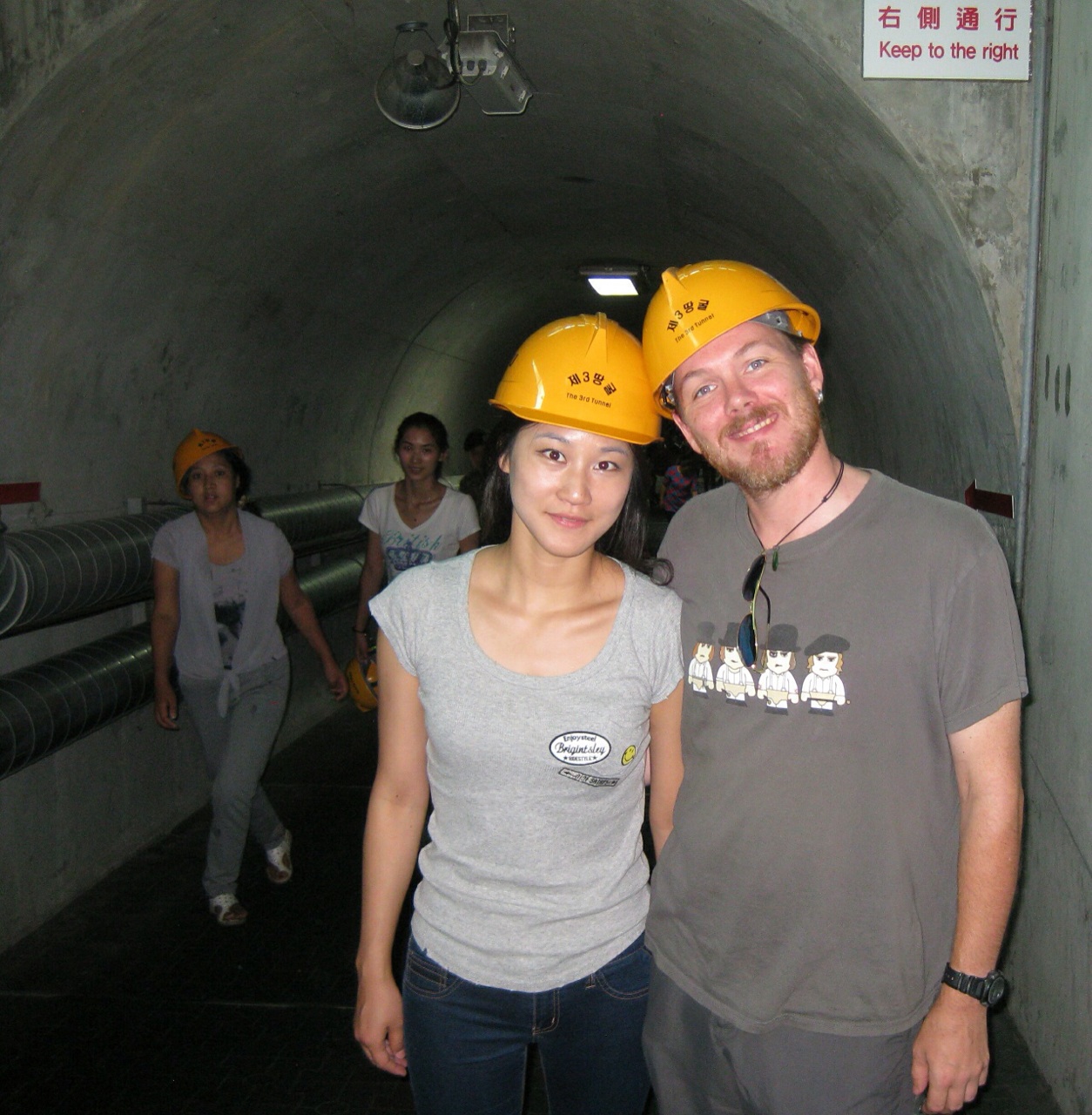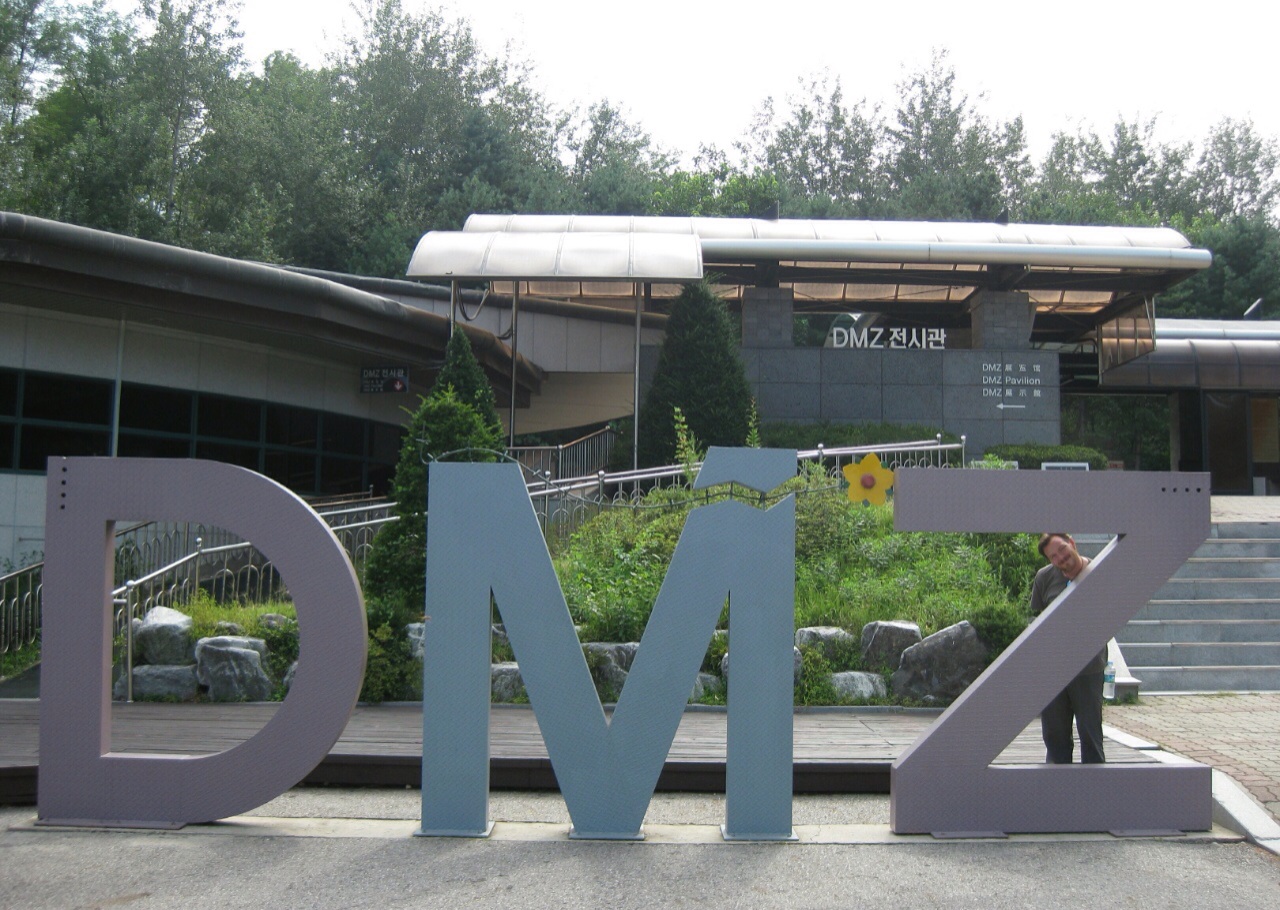It's ironic, in an Alanis Morrissettean way, that the two-plus-two kilometre wide landstrip along the border between North and South Korea is called the DeMilitarized Zone. No border on earth is more jam-packed with soldiers, barbed wire, watchtowers and landmines. An estimated half million men marches the north side, and roughly 150.000 on the south. Had China had that kind of man and firepower back when the Mongolians were a threat, there'd be no need for any great walls. And thus, I suppose, one less point of interest for me on this odyssey.
Once the minivan had wriggled its way out of the bustling urban clutter of Seoul traffic, the trip to DMZ was quite quick and pleasant. As Hangang splits in two, with the Imjin being a tributary, one could see North Korea on the far side. The difference in landscape is far more striking than one would imagine; whereas the rolling hills on the south side are covered in trees and bushes, the northern ones are as bald as Patrick Stewart. North Korea lacks energy sources and technology such as wind, solar, oil, water and coal, and must therefore rely on wood for heating and cooking. Naïvely, they nevertheless think they can impress the civilized world, and along the riverbanks fake villages are built, in order to show off their immense wealth.
Proper wealth is found, however, on the south side. The land is rich, the soil is fertile and the lack of industries and heavy traffic means no pollution and therefore excellent farming opportunities. Some claim the best rice in Korea, or the world even, is grown here. Apart from the soldiers, including a small American garrison, the only people allowed to live in, and thereby farm, the area are those that have lived here for generations. With the wealth of the land and the few people sharing it, the average income is about thrice that of the rest of South Korea.
Stopping by a newly built, but almost as newly cancelled, train station that once served the Seoul-Pyeongyang line, we headed off to a viewing platform, from where the northern neighbour could be seen, in all its baldness, through surprisingly cheap binoculars. When Seoul was awarded to host the 1988 olympics, national pride entered, and one way it showed was to erect a tall flagpole, hoisting the white and red-and-blue for northerners to see. However, the wounded northern pride quickly resulted in North Korea building a slightly taller pole, after which South realiated with an even bigger, and so on and so forth etc etc. The flag pole pissing contest was eventually won by the North, who could, rightfully for once, finally boast about something: That they had the tallest flagpole in the world.
Innocent pole wars aside, the enmity between the two nations certainly has a darker side. Even though the fighting stopped in 1953, the Korean war is technically still on. The North has, and probably will again, tried to invade South Korea. As Kim Jong-Il seized power, his devious plans took form. According to a deflected military engineer, Kim ordered his twenty divisions to build one tunnel each, thereby planning to undetected launch his army on the unsuspecting southrons. And he would have gotten away with it, too, if it weren't for those darn kids: While digging the tunnel, hunger set in and the North Korean troops built a fire for cooking rice where they sat, underground. South Koreans noticed the smoke from the ground, and the first infiltration tunnel was discovered in 1974. Another tunnel was found in 1975, yet another in 1978 and the hitherto last one as late as 1991. Should the words of the deflected engineer carry the truth, there should be at least sixteen more infiltration tunnels, spanning the border all across the peninsula. Searches go on daily, with waterfilled sample pipes indicating underground explosive action, and circle search patterns, should one pipe indicate as such. There is a standing reward of a million dollars to anyone finding a confirmed tunnel. The third infiltration tunnel is open for public, and so we descended the 73 metres underground, cheerfully wearing yellow safety helmets and sneakily producing cameras when soldiers and CCTV wasn't around.
There is still some trading going on between the quarrelling siblings. In fact, some South Korean companies have placed their factories across the border, thereby getting the immensely cheaper labour of the north. At Unification Village, which is little more than a souvenir shop, one can buy a few North Korean items, mostly of the fermented or distilled kind.
As the case sometimes are with group tours in Asia, this one was partly sponsored by some jewellry provider or other, and so the last stop of the DMZ tour was at their shop. One could easily be stuck there for hours. Or, you know, minutes, if the mostly Scandinavian group is smart enough not to fall for such cheap tricks.
-----
